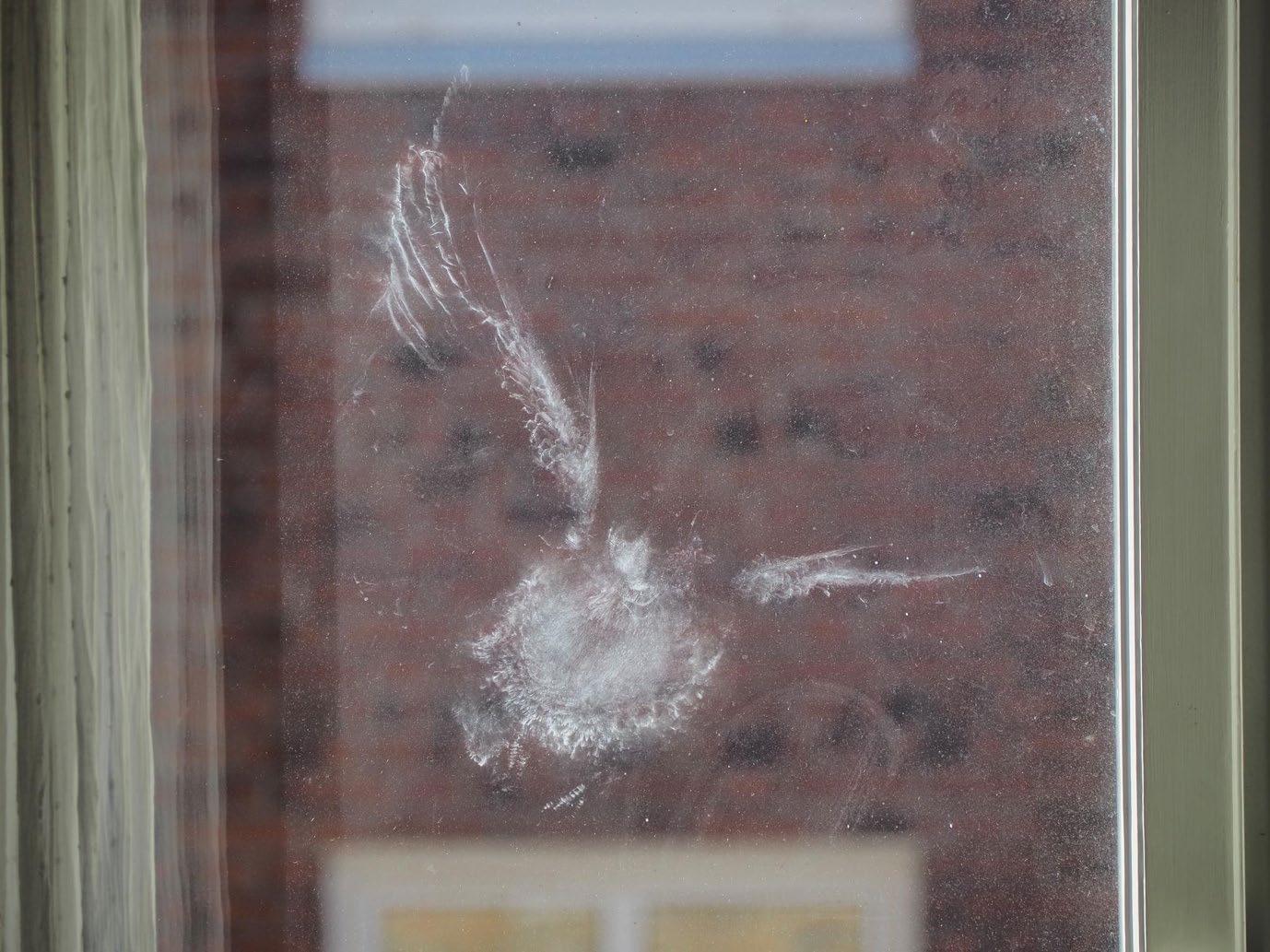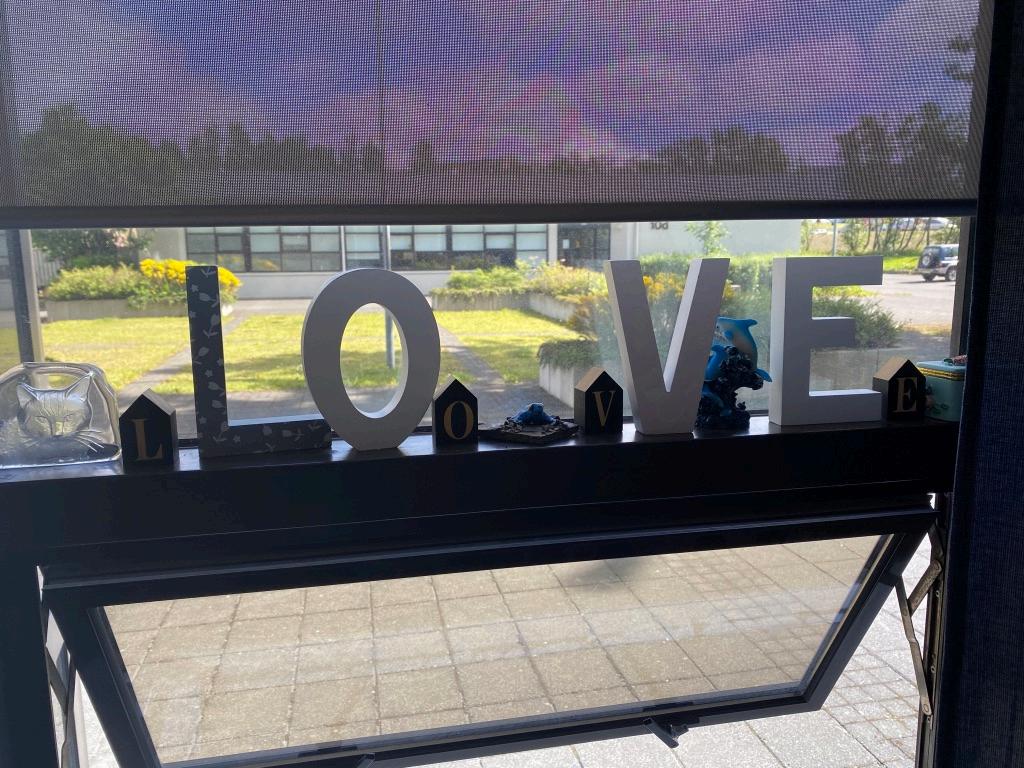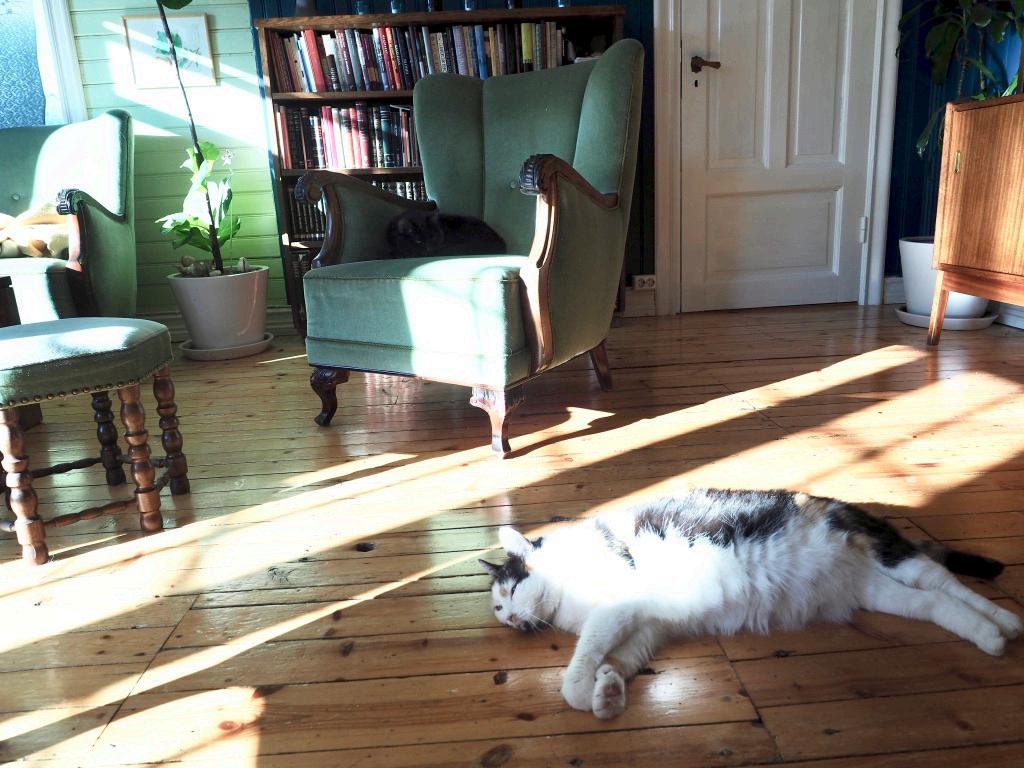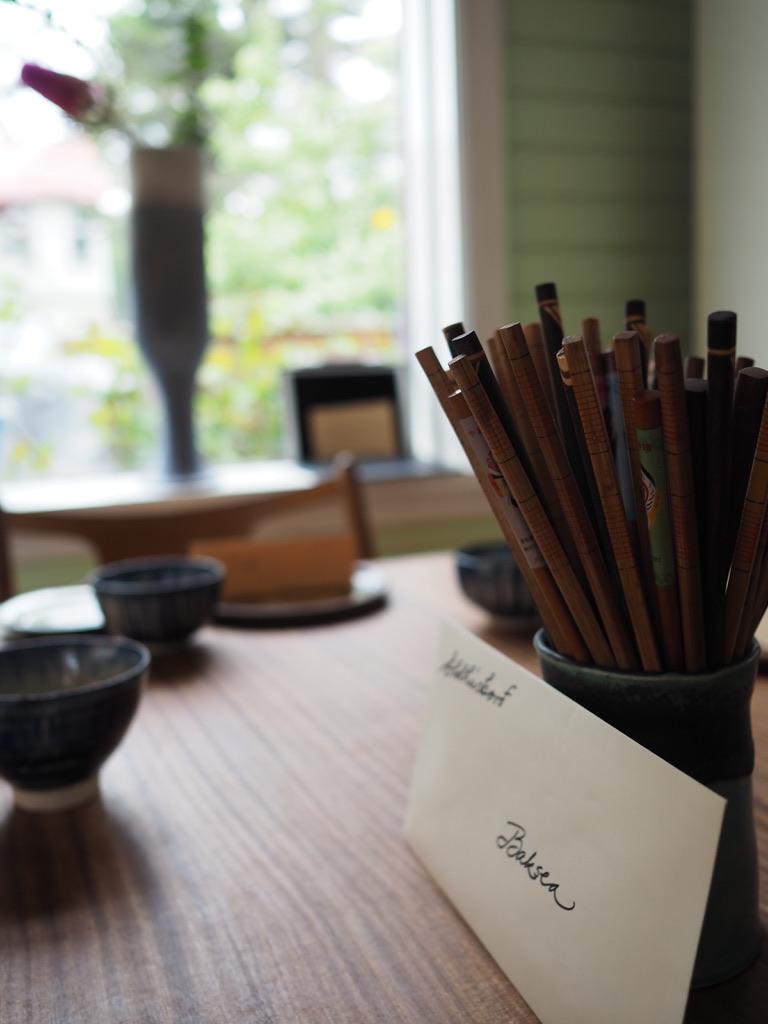
15 minute read
LETTER TWO METHOD
LETTER TWO
METHOD
Advertisement
Dear reader,
this letter I have divided into chapters on different encounters with agents in my practice. I use the image of encounter to gain a perspective on how the work reacts to the world. For me each encounter holds a potential and through this exercise I will describe and reflect on my artistic methods as they unfold in a specific context.
The encounter with the method
For a number of years, I have been making immersive and participatory performances, drawing on lived experiences. Through the last four years I have created a method consisting of procedures and tools. The method consists of three core elements: the content, the process of creation and the mediation.
Content
• Quality of life and sustainable values • Lived experiences and site specificity
Creation process
• Co-creation and spectator participation • Reduced production and sustainable practice
Mediation format
• Immersive and transformative performance • Relational/Porous dramaturgies • Question making
For each performance the method produces a framework that invites spectators to render their own stories, emotions, values and experiences as the core content of the performance. The framework distinguishes between three types of spectator participation: action, observation and reflection. The work is site specific and engages individuals, local communities and stakeholders into the creative process. The work is concerned with personal values and how they relate to quality of life. The method produces work that functions as a vessel for narratives that participants bring to the work. The practice is not occupied with representation as such but rather the singular presence of each spectator that re-present themselves by engaging with the work. The aesthetic and dramaturgical approach is porous and relational, dependent on what the spectator brings to the performance and what she sees as part of it. The work provides the spectator with „a map to navigate“ (the dramaturgy, the route) and a „backdrop“ (the site) to bring out their stories and to test their own ideas and values. At the foreground for the artistic method is question making. The work strives to produce actual questions that are mediated through the performance and transcend the layers of the experience.
I now will turn to the actual creation process of No Show and trace how this method unfolds within that work. The idea was to invite spectators to a home of a stranger where they would be introduced to the everyday routines, conditions and values of the hosts. The hosts were absent, and the spectators would experience the work in solitude. The host left letters that guided the spectator through the home. Through the letters the hosts shared fragments of their stories, everyday rituals and values that relate to their homes and family. The spectator would be invited to perform tasks that involved observation, action and contemplation. As a guest you engaged in an intimate dialogue with a person who wasn't there. The title in Icelandic is FjarVera, meaning absence, a two conjoining words Fjar meaning distance or away and Vera meaning a being or the verb being. The title would be written with each word starting with a capital letter underlining the wordplay and the multiple meaning. The idea was that several hosts from different backgrounds invited guests to walk through their home, one at a time, and contemplate what it means to be present in your own life. The work asks: What does presence involve and what is it that separates and unites us as human beings?
The encounter with the hosts
The objective of the work was to focus on quality moments in daily life and explore different strategies for creating a nurturing environment in what one calls a home. I wanted a diverse group of hosts, different ages, abilities, family types, cultural background and social status, living in different neighbourhoods. Early on I realised that I would need to invite spectators into my own home for two reasons; to make sure I understood the perspective of the host-participants and by doing that, to minimize the temptation or risk of exploitation on my behalf. Thus, I needed to find four hosts willing to invite strangers to roam around their homes in solitude and to share with them personal details, daily routines, stories and values. The performance was to run during the opening week of Reykjavík Art Festival that celebrated it´s 50th Anniversary on the theme Universes. Due to the pandemic, that affected the entire programming of the festival, the works were separated and spread over a longer period with each house being open for one week. This unexpected change, gave me more time to reflect in between the works, creating the opportunity to develop the method as I went along, adjusting the dramaturgical approach with each new edition of the work.
The five homes were as follows in a chronological order.
The first host was a 46-year-old choreographer married to an engineer/investor with three children aged from 11 to 20, and a family dog. They live in a higher middleclass neighbourhood. They have good means and live in a well kept two-storey house with a garden and a jacuzzi, the interior carefully picked by the host, an artistic woman of good taste.
The second host was me, a performing artist and an academic dean married to a Doctor of Philosophy also an academic. Our home is on two floors on top of a barbershop, in the centre of town that hosts a family of six persons, two cats and a visiting dog. The house is colourful, bohemian and nonconventional. The children, including son in law, are aged 21 – 30 with different attachments to the home.
The third host was a retired nurse aged 66, a grandmother living with two goldfish in a socially challenged multicultural neighbourhood, with little means. Her two grown up children and three grandchildren look at the flat as their home but don´t live there. She is artistic and caring. She has health issues and has lived in socially deprived conditions for the most of her life. She has experienced loss and challenges of all sorts. She is very sufficient and has a philosophy around consumption and aesthetics.
The fourth host was a single mom of 40 years with a teenage son. Polish immigrant, tourist guide, art theorist and a minimalist. She lives in less then 30 square meters with a single income. She has a heavy family story connected to a political corruption scandal in her hometown. She lives near the centre in a cultural part of Reykjavík. She is well educated, speaks fluent Icelandic and has lived in the country for 20 years.
The fifth host was a 28-year-old woman in a wheelchair with CP disorder (Cerebral palsy). She lives in a social housing for people with different disabilities. She does not have permanent employment but is active as a volunteer in different organisations related to sports and disability. She has a cat and a good friend that spends a lot of time in her home.
It was a challenge finding the right people to participate. I let the word out in my closest surroundings and the people at the festival put their heads together finding candidates. I only needed four people apart from myself. I would first contact the person by mail or phone where we would discuss the content and practicalities of the piece. To my surprise I only got a couple of rejections and ended up having to choose from families that wanted to participate. Two participants came through the festival, one from my close circle and one is a friend of a friend. After the initial contact we would meet at the premises where I would explain in detail the objectives of the work, what I was interested in and possible implications. We discussed which parts of the homes would be closed and what kind of things the hosts would share with the guests. I would take photographs and ask briefly about the activities of the family in the home. During a second visit I would interview the host in detail about their lives in the home, about objects, routines and values. I invited them to share stories and ideas about quality of life and happy moments connected to certain objects, people or places in the home. I would audio-record the interviews.
In the interviews some hosts would address unhappy subjects and share their challenges, sorrows and disappointments. I would not ask for information or details of anything that I thought would be difficult, heavy or traumatic since that was not the subject matter of the piece but when that happened, I would listen but not ask further or go into details of these information. I understood that some facts or information of this kind needed to be a part of the piece because they stick to the everyday life and are a natural part of our bittersweet existence. If there is light you will have a shadow. As an example of how this would emerge in the process was in the case of one of the hosts that had lost her daughter. She only told me that her daughter had passed away when the daughter was in her early twenties. I never knew exactly how the daughter died but the absence of the daughter was so strong that it had a place in the home. That tangible loss, the presence of the absence, became a part of the piece without the details being expressed, they belong only to the host. After the long and deep interviews, I would return to my desk and listen to the material, look at the photographs and write the letters for the hosts. I would concurrently create the tasks, rituals and route through the house. The dramaturgy of each piece was different depending on the size of the house, the number of people living there and the themes and atmospheres that I would sense on site with the hosts. Concrete elements that would return in every piece was an appreciation of what constitutes a family, an imagined dinner, washing of hands, focus on recreational activities, mindfulness practises (noticing sensations and awareness) and expressions of nonhuman perspectives. When I had written a draft of the letters and the rituals, made tasks and created a route through the house I would send the letters to the hosts for them to rewrite or comment. We would then meet for
the third session and go through the manuscript together, adding details and finalizing the texts and routes. The rituals needed most attention since they were written in a poetic prose and served the purpose of capturing the nature of an activity and at the same time to be truthful and concrete. Each host made sure that nothing in the letters was false and accepted the obvious act of staging that took place in the texts. Since the tasks and contemplations were a part of my method, I shared my vision with the hosts and asked each of them to contribute with questions or actions they found important. As a minimum there would be one specific question raised by the host in each piece and the gestures would almost all correspond to gestures made by the people in the home.
The dramaturgy allows the guest to bring her own narratives and asks of her to fill in the blanks, imagine, create and perform her own version of the piece. Therefore, it was important to leave space in the structure for imagined narratives to unfold, for memories and ideas to emerge, for magic to happen or the sublime to enter like in a Japanese Zen garden. For each guest the affect would be different, depending on their imagination and what they brought with them of ideas and experiences, basically depending on their ability to co-create. One important factor of the dramaturgy worth mentioning is the historical context of when the work took place. It was presented during a global pandemic where majority of the world´s population had been confined to their homes for months.
The pandemic added a new perspective to the very concept of what a home entails and means for people. Originally the piece was partly tailored to the theme of the Festival, Universes, referring to the home as a universe of its own, but during times where the outer world invaded the private worlds and peoples entire lives unfolded within the parameters of the home, the work now evoked new and urgent perspectives. One can argue that this is an aspect of what can be understood as the nature of relational or porous dramaturgies. Here referring to the world situation being a key factor of what the guests brings with them to the work and hence becomes the foundation for how it is decoded. The affect of the work
cannot be separated from the experience of living these times.
Coming back to the actual dramaturgical tools. I decided to enhance the staging effect by adding an additional aesthetic layer to the composition. This dramaturgical tie was presented through the title of each letter and would contain reference to something physically present in the proximity of the actual letter or as an idea or imagined component. I proposed to each of the hosts that they would pick a theme for the journey through their home connected to their interests. In the first home the host chose essential oils. With each letter the host picked a scent corresponding to the function of the particular space the letter would be in. The scent would be felt in the space through different sources some involving interactivity. In my own home flowers came with each letter, collection of beautiful words in the third piece, postcards in the fifth and song titles in the last one. This extra layer reflected the character of the host and created a coherent theme for each home and an atmospheric effect to the journey.
In writing the letters for the hosts, I tried to stay true to their character using their own words from the interviews. When we had worked through all the details of the dramaturgy the idea was that the host would choose the stationary and write the letters by hand. It felt like I was handing over agency to the hosts, by giving them power to influence the aesthetical presentation of the text that we co-created, having their personal mark on the letters that otherwise I had edited. They did not all share this need, and of four participants apart from my self, only one was willing and able to choose and buy the stationary and write the letters. Two of the hosts were not physically able to write the letters and the third had in her own judgement, unreadable handwriting. Instead of writing the whole letters by hand, these hosts would put their handwritten signature on the first and last letter that I had printed on a stationary I had chosen with their consent.
The collaboration with the hosts and their closest family and human and nonhuman friends were in my view a substantial part of the actual performance and has as much impact as the following encounters with the guests. These encounters are an important facet of the work and have its own performativity and dramaturgy to it, that in part has been described above. In my view, each phase of
the creation process constitutes a performative part of the whole. Each moment of the process play their part in a series of performative but still genuine encounters between different participants of the performance culminating in the encounter with the spectator where multiple agents are at play. At a later stage in my research, I intend to explore more in depth this aspect of my work, namely the everchanging performativity of the creation process.
The encounter with the guests
The guests arrive at the host´s door and receive a key to enter the house with a few instructions on how to navigate the piece. The guest is then left alone in the house to perform the piece. Guided by a series of letters through the home, moving from room to room, between different situations, reading fragments of stories, rituals and thoughts about daily life and everyday choices of their hosts. They are invited to observe, perform physical tasks and asked to reflect on their own lives, values and conditions. The experience was solitary – except where the pets of the home would choose to participate. Two editions where open to international guests with optional letters in English.
One can say that the spectators are invited to different encounters during their stay in the home. They will certainly have an encounter with their hosts and their kin, their conditions, values and situations. They also have an encounter with the artist through subject matter, the aesthetics and the dramaturgy of the piece and last but not the least, they will encounter themselves, their own narratives, values and rituals. Through the experience the guest is immersed in the scents, colours and sensations the home has to offer, they put themselves in the shoes of their hosts and from within the strangers universe they are asked to look at themselves.
There is of course no certainty that the guest will perform the work as suggested by the letters. In fact, the guests can do whatever they like after entering the house. The dramaturgy will always be subject to random elements that the particular guest brings with them of ideas, interests, mood, taste, value, experience, memory, imagination and openness. The work is guaranteed to produce affect and invites the spectators in turn to affect (produce) their own affect. The work is dependent on what and how each guest encounters the circumstances and is a singular experience that contains a complex combination of cognitive and sensorial associations related to that particular person. Here we are entering a discussion on the complexity of affect that will be the subject of my next letter
you.
RITUAL II
You are sunbathing. The sunrays penetrate your body through your black fur making you steaming hot. The door is open, and you decide to cool down inside. You are startled to see a stranger on the sofa holding a small electric equipment in her hand. She is about to push a red button when she stops to look at you. Your wheeled friend smiles at you with a glimpse in her eyes telling you that everything is OK. You rub your self against your friend and tell her that you are going to rest. The woman presses the red button, and they start to speak. You let the human’s voices hum you to sleep.
TASKS
OBSERVATION
Pay attention to your body´s reaction to the text you have been reading. Do these sensations belong to you or the text?
ACTION
Create a list of skills or tools that you would like to possess.
CONTEMPLATION
In your experience what is the difference between skill and tool, between method and methodology, between art and life?







